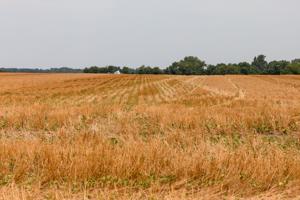(The Center Square) – Illinois row crop farmers have until the end of the month to apply for cover crop incentives for fields that were planted with cover crops in 2023. The incentives are designed to help farmers offset the start-up costs of planting cover crops.
Greg Goodwin is the director of Precision Conservation Management, a farmer-led conservation program of the Illinois Corn Growers Association and the Illinois Soybean Growers Association.
The signup process for the Farmers for Soil Health Program is simple with a smaller administrative burden than most other programs, Goodwin said.
“This is a three-year cover cropping cost share. It starts out at $25 per acre for the first year, $15 per acre for the second year and $10 per acre for the third year on the same field,” he said.
The application at FarmersForSoilHealth.com/enrollment should be filed by the end of February 2024.
Farmers for Soil Health is a collaborative partnership between the National Corn Association, the National Soybean Association and the National Pork Producers.
Signing up for the Farmers for Soil Health Program does not preclude farmers from participating in other cover crop programs.
“The federal dollars make no claim on the carbon asset with a farmer planting a cover crop,” Goodwin said.
Cover cropping fits “really, really well” for farmers who are just starting out or for farmers who are looking to scale, Goodwin said. A farmer may have tried cover cropping through another program and now they have a new field.
“They understand the economics to see this as a really good opportunity that is relatively simple to sign up for that can help them scale cover crop adoption across their farm,” Goodwin said.
Over a four- or five-year period and beyond, farmers who plant cover crops are seeing soil health improvements that help with the resilience of their cash crops, Goodwin said. The organic matter in their soil improves. The soil’s water-holding capacity improves.
Farmers with more marginal soil types benefit.
“The gains they see on the soil health side will help them out in the long term,” Goodwin said.
Cover crops can create a weed mat that helps farmers manage weeds and eliminate a herbicide task, Goodwin said. Cover crops attract beneficial insects.
From a soil loss perspective, cover crops prevent erosion of high-slope soils, Goodwin said.
“We are all firm believers that cover cropping is a good approach,” he said.





